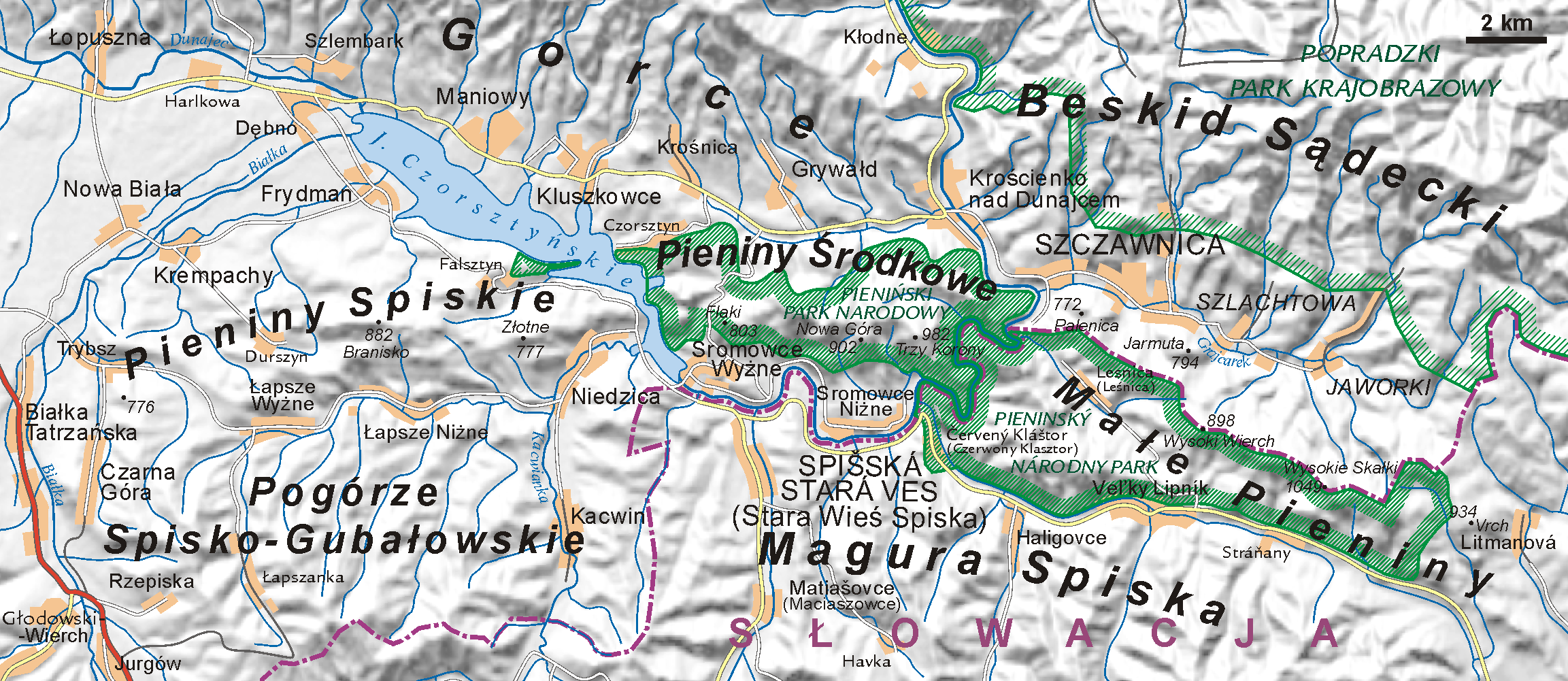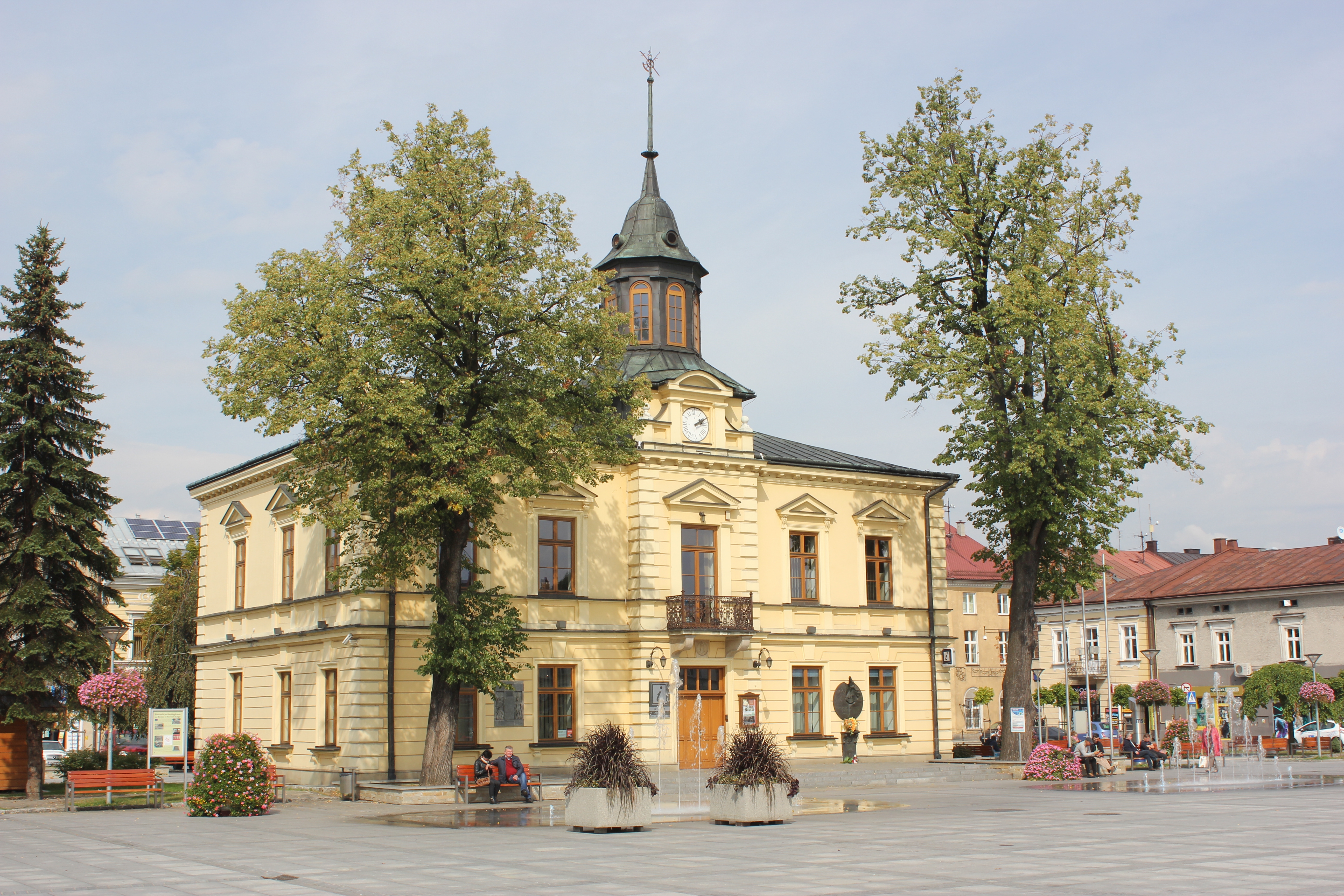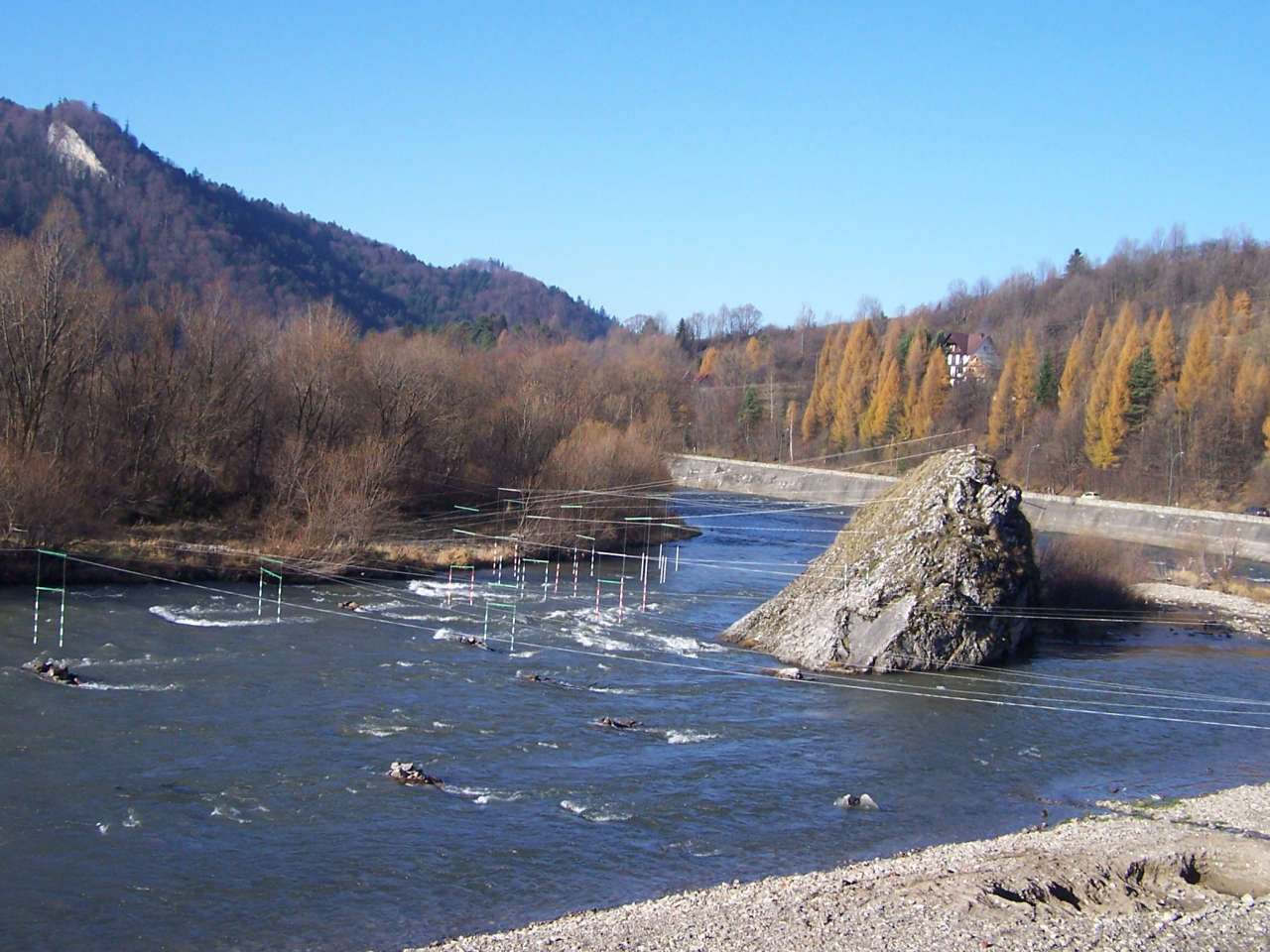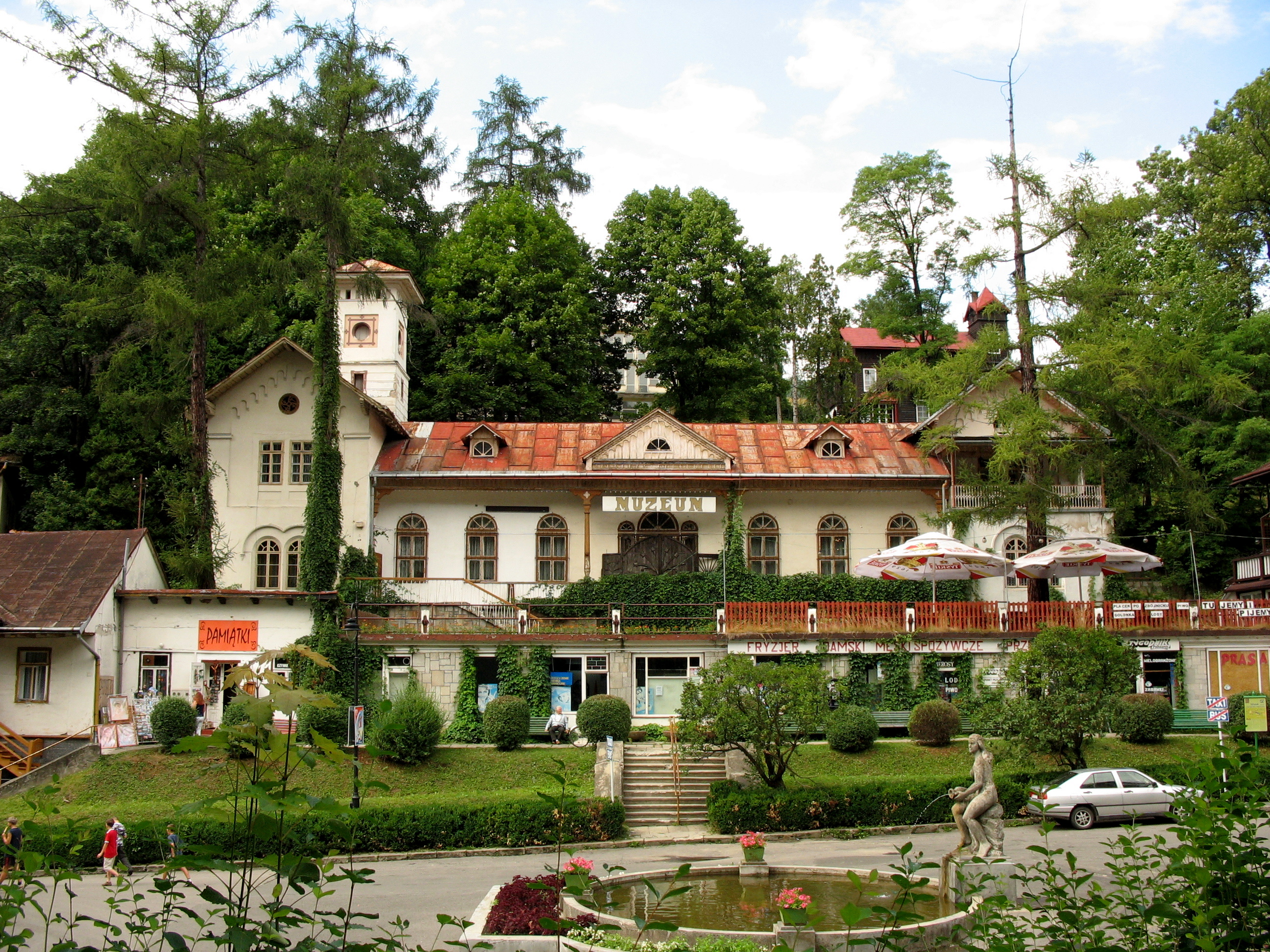|
Dunajec
The Dunajec (); Goral dialects: ''Dónajec'') is a river running through northeastern Slovakia and southern Poland. It is also regarded as the main river of the Goral Lands. It is a right tributary of the Vistula River. It begins in Nowy Targ at the junction of two short mountain rivers, Czarny Dunajec and Biały Dunajec (Black and White Dunajec). Dunajec forms the border between Poland and Slovakia for in the Pieniny Środkowe (Slovak: Centrálne Pieniny) range, east of the Czorsztyn reservoir. Geography The Dunajec is long, including its source river Czarny Dunajec,Statistical Yearbook of the Republic of Poland 2017 |
Dunajec River Gorge
The Dunajec River Gorge ( pl, Przełom Dunajca; sk, Prielom Dunajca; german: Dohnst-Schlucht) runs through the Pieniny Mountains in the south of Poland and the north of Slovakia (as Dunajec is the border river between the two countries in the area). The gorge is characterized by some of the most interesting geological and geomorphological structures and area-specific natural ecosystems with little anthropogenic influence. It is featured on UNESCO's Tentative List of World Heritage Sites in Poland.UNESCO World Heritage List, Poland. Accessed 7 September 2011. Dunajec Gorge is also one of the best-known attractions in the Pieniny Mountains. Wooden [...More Info...] [...Related Items...] OR: [Wikipedia] [Google] [Baidu] |
Niedzica Castle
Niedzica Castle also known as Dunajec Castle ( lat, Castrum de Dunajecz, hu, Nedec Váralja / Nedec-Vár, german: Sub-Arx Unterschloss, sk, Nedecký hrad), is located in the southernmost part of Poland in Niedzica ( Nowy Targ County in Lesser Poland). It was erected between the years 1320 and 1326 by Kokos of Brezovica on the site of an ancient stronghold surrounded by earthen walls in the Pieniny mountains. The Niedzica Castle stands at an altitude of 566 m, on a hill upstream from the Dunajec River mouth, measured from the center of the dam on Lake Czorsztyn. The outline of Niedzica Castle can best be viewed from the ruins of Czorsztyn Castle on the other side of the lake. It is known as one of the most picturesque castles in the country and adorns the covers of many books. History The castle was an important centre of Polish-Hungarian relations since the 14th century. It was a place where the money lent by the Polish king to the Hungarian king Sigismund had to be ret ... [...More Info...] [...Related Items...] OR: [Wikipedia] [Google] [Baidu] |
Zamagurie
Zamagurie (in Slovak, ; pl, Zamagurze) is a region in the Goral Lands area in the north of the Spiš region, between the Spišská Magura in the south, the Dunajec river in the north and the Białka (Slovak: ''Biela voda'') river in the west. It is divided between the Prešov Region of Slovakia and the Lesser Poland Voivodeship of Poland and is further divided between the Slovak districts of Stará Ľubovňa and Kežmarok and Polish gminas of Bukowina Tatrzańska, Nowy Targ and Łapsze Niżne. The centre of the region is the Slovak town Spišská Stará Ves, which is just near the border. The region also used to be one of the official tourist regions of Slovakia until 2004. In 2006, a new border bridge for pedestrians was open between Červený Kláštor and Sromowce. Tourist attractions The most popular tourist attraction are the Pieniny mountains with the Dunajec river gorge, with floating trips on wooden canoes bound into rafts, hikes to the Trzy Korony or Sokolica hill ... [...More Info...] [...Related Items...] OR: [Wikipedia] [Google] [Baidu] |
Pieniny
The Pieniny (sometimes also the PieninsSzafer, Władysław. 2013. ''The Vegetation of Poland: International Series of Monographs in Pure and Applied Biology''. Warsaw: Pergamon Press, pp. 156, 388. or the Pienin Mountains,Griffiths, Graham C. D. 1976. Studies on Boreal Agromyzidae (Diptera). XII. ''Phytomyza'' and ''Chromatomyia'' miners on Astereae (Compositae).''Quaestiones Entomologicae'' 12: 239–275, p. 255. hu, Pieninek) is a mountain range in the south of Poland and the north of Slovakia. It is classified within the eastern section of the Western Beskids. The Pieniny mountain range is divided into three parts – ''Pieniny Spiskie'' ( sk, Spišské Pieniny) and ''Pieniny Właściwe'' (Slovak: ''Centrálne Pieniny'') in Poland; and, ''Małe Pieniny'' ( en, Lesser or Little Pieniny; sk, Malé Pieniny) in Poland and Slovakia. The Pieniny mountains consist mainly of beds of limestone and dolomite. The most famous peak, ''Trzy Korony'' (Three Crowns), is 982 metres high. ... [...More Info...] [...Related Items...] OR: [Wikipedia] [Google] [Baidu] |
Trzy Korony
Trzy Korony ( en, Three Crowns, sk, Tri Koruny) is the summit of the Three Crowns Massif, an independent portion of a range called Pieniny Mountains in the south of Poland. Trzy Korony forms the central part of a compact group of connected mountains known as Pieniny Środkowe, consisting mainly of the limestone and dolomite rock strata. Trzy Korony is located within the Pieniny National Park in Lesser Poland Voivodeship. 8.69 MB Geography The summit is separated from the surrounding peaks (known as Łysiny Group) by the Wyżni Łazek Pass, descending into deep valleys with streams surrounded by forested slopes. The Three Crowns consists of five sharp peaks, made of resistant limestone. The highest of the peaks is called Okrąglica. It stands 982 meters above sea level. At the top of Okrąglica there is an observation platform complete with metal barriers built for the tourists. – The platform, overlooking Dunajec River Gorge, can accommodate up to 15 people at a ... [...More Info...] [...Related Items...] OR: [Wikipedia] [Google] [Baidu] |
Niedzica
Niedzica ( sk, Nedeca, hu, Nedec) is a resort village in Nowy Targ County of Lesser Poland province, Poland, located on the banks of Lake Czorsztyn. It is famous for Niedzica Castle, also known as Dunajec Castle. It lies approximately north-east of Łapsze Niżne, east of Nowy Targ, and south of the regional capital Kraków. History The area became part of Poland in the 10th or early 11th century, and later it passed to Kingdom of Hungary, Hungary. The village was first mentioned in a written document in 1320 as ''villam Nisicz''. The Niedzica Castle was built between 1320 and 1326 on foundations of a prehistoric roost, and was an important centre of Hungary–Poland relations. The area became again part of Poland following World War I. During World War II, from 1939 to 1945, it was Occupation of Poland (1939–1945), occupied by the Slovak Republic (1939–1945), Slovak Republic. Niedzica developed into a popular tourist destination as a result of the construction of the dam ... [...More Info...] [...Related Items...] OR: [Wikipedia] [Google] [Baidu] |
Vistula
The Vistula (; pl, Wisła, ) is the longest river in Poland and the ninth-longest river in Europe, at in length. The drainage basin, reaching into three other nations, covers , of which is in Poland. The Vistula rises at Barania Góra in the south of Poland, above sea level in the Silesian Beskids (western part of Carpathian Mountains), where it begins with the Little White Vistula (''Biała Wisełka'') and the Black Little Vistula (''Czarna Wisełka''). It flows through Poland's largest cities, including Kraków, Sandomierz, Warsaw, Płock, Włocławek, Toruń, Bydgoszcz, Świecie, Grudziądz, Tczew and Gdańsk. It empties into the Vistula Lagoon (''Zalew Wiślany'') or directly into the Gdańsk Bay of the Baltic Sea with a delta of six main branches (Leniwka, Przekop, Śmiała Wisła, Martwa Wisła, Nogat and Szkarpawa). The river is often associated with Polish culture, history and national identity. It is the country's most important waterway and natural symbol, a ... [...More Info...] [...Related Items...] OR: [Wikipedia] [Google] [Baidu] |
Vistula River
The Vistula (; pl, Wisła, ) is the longest river in Poland and the ninth-longest river in Europe, at in length. The drainage basin, reaching into three other nations, covers , of which is in Poland. The Vistula rises at Barania Góra in the south of Poland, above sea level in the Silesian Beskids (western part of Carpathian Mountains), where it begins with the Little White Vistula (''Biała Wisełka'') and the Black Little Vistula (''Czarna Wisełka''). It flows through Poland's largest cities, including Kraków, Sandomierz, Warsaw, Płock, Włocławek, Toruń, Bydgoszcz, Świecie, Grudziądz, Tczew and Gdańsk. It empties into the Vistula Lagoon (''Zalew Wiślany'') or directly into the Gdańsk Bay of the Baltic Sea with a delta of six main branches (Leniwka, Przekop, Śmiała Wisła, Martwa Wisła, Nogat and Szkarpawa). The river is often associated with Polish culture, history and national identity. It is the country's most important waterway and natural symbol, an ... [...More Info...] [...Related Items...] OR: [Wikipedia] [Google] [Baidu] |
Nowy Targ
Nowy Targ (Officially: ''Royal Free city of Nowy Targ'', Yiddish: ''Naymark'', Goral Dialect: ''Miasto'') is a town in southern Poland, in the Lesser Poland Voivodeship. It is located in the Orava-Nowy Targ Basin at the foot of the Gorce Mountains, at the confluence of the Czarny Dunajec and the Biały Dunajec. It is the seat of the Nowy Targ County and the rural Gmina Nowy Targ, as well as the Tatra Euroregion. With 33,293 inhabitants, Nowy Targ is the largest town and the historic capital of Podhale, as well as its main commercial, communication and industrial center. The town has the Podhale State Vocational University and the highest located airport in Poland. Established before 1233, Nowy Targ received city rights on June 22, 1346 from King Casimir the Great. The historic architectural and urban complex of the town with a medieval market square has been preserved to this day. Toponymy In 1233, a settlement called in pl, Stare Cło, lit=Old Toll ( la, Antiquum T ... [...More Info...] [...Related Items...] OR: [Wikipedia] [Google] [Baidu] |
Rożnów, Lesser Poland Voivodeship
Rożnów is a village in the administrative district of Gmina Gródek nad Dunajcem, within Nowy Sącz County, Lesser Poland Voivodeship, in southern Poland. It lies approximately north of Nowy Sącz and south-east of the regional capital Kraków. The village has a population of 1,700. Rożnów Dam Rożnów is the location of a dam on the Dunajec and a power station built in 1935-1941. The dam was constructed originally to prevent flooding after the disastrous 1934 flood in Poland which took the lives of 55 people and caused damages estimated at 60 million interbellum zlotys; the biggest flood in the Second Polish Republic. The construction of the Rożnów Dam resulted in the creation of the |
Kotuńka
The Kotuńka Rock is a prominent rock found in the centre of the current of the river Dunajec just before the entry into Szczawnica. Built from limestone, the rock is well seen from the road and is a characteristic landmark in the area. Just above the rock the Grajcarek flows into the Dunajec. On from the rock is a bridge, after which begins the Pieniny Trail Road which heads to a border crossing. Around the Kotuńka rock the Dunajec river rapid is very strong and creates a swirl. This water feature is used by mountain kayakers, which often train in the area, to the left of the Kotuńka rock are embedded gates for such activities. As with many Pieniny rocks, the Kotuńka rock also has a legend. According to the legend, the devil carried a rock which he tried to bring to the Pieniny Castle on the Castle Mountain in the Pieniny, before which in the Tatra Mountains Kinga of Poland was hiding in. However along the way a rooster crowed and the devil's energy went away. The rock fell from ... [...More Info...] [...Related Items...] OR: [Wikipedia] [Google] [Baidu] |
Szczawnica
Szczawnica is a resort town in Nowy Targ County in Lesser Poland Voivodeship, in southern Poland. As of June 30, 2007, its population was 7,378. Szczawnica has been a well-known resort town since the mid nineteenth century. Due to the presence of alkali sorrel springs and favorable climatic conditions, many respiratory and digestive tract illnesses are treated there. In 2005 the popular local spa was officially returned by the Polish government to its prewar owners – Count Stadnicki family. The spa has almost two-hundred-year history. Its last private owner was Count Adam Stadnicki, whose grandson – Andrzej Mańkowski – is the founder of the new Spa Town Museum being fitted in the center of Szczawnica, at Dietl Square (2009). The museum of the Szczawnica resort aims to present more than 350 different types of artifacts associated with the local therapeutics, archival documents, drawings, plans of buildings, old photographs, postcards and books. Szczawnica has many skiing t ... [...More Info...] [...Related Items...] OR: [Wikipedia] [Google] [Baidu] |







